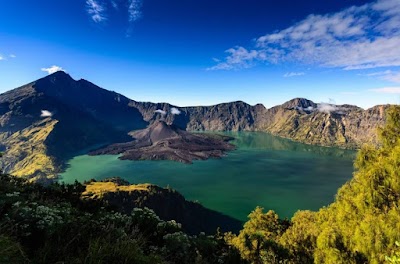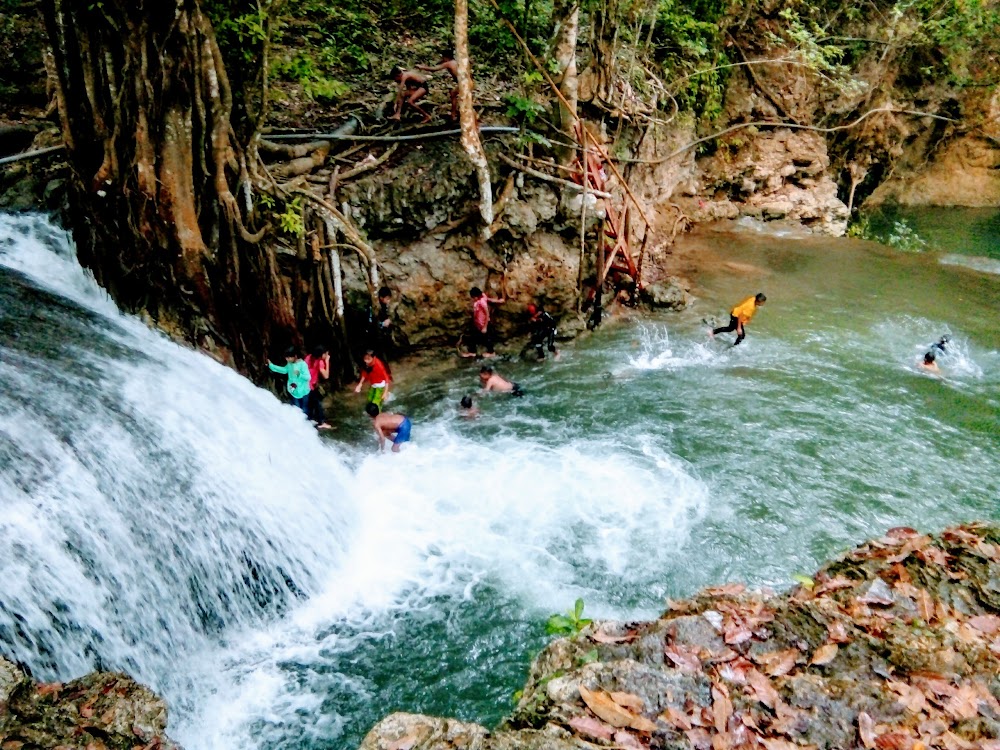Rinjani National Park (Taman Nasional Rinjani)
Overview
Rinjani National Park, located on the stunning island of Lombok in the province of Nusa Tenggara Barat, Indonesia, is a destination that captivates visitors with its unparalleled natural beauty and ecological significance. Spanning approximately 41,330 hectares and featuring the majestic Mount Rinjani, this national park is renowned not only for its breathtaking landscapes but also for its rich cultural heritage.
Mount Rinjani: A Trekker's Paradise
Standing tall at 3,726 meters, Mount Rinjani is Indonesia's second-highest volcano. Its imposing stature and the panoramic views from its summit draw trekkers from around the globe, eager for adventure. However, this mountain is more than a mere challenge; it holds deep spiritual significance for the local Sasak and Balinese communities, who perform annual rituals and offerings, believing the volcano to be the abode of sacred deities.
A Rich Cultural Tapestry
The history of Rinjani National Park is intricately linked with the traditional beliefs of local communities. Officially designated as a national park in 1997, it has since been carefully managed to protect its unique biodiversity and cultural legacy. Ongoing efforts aim to strike a balance between tourism and conservation, ensuring that both the environment and local communities benefit from the park's sustainable use.
Diverse Ecosystems and Wildlife
Rinjani National Park boasts an incredible array of ecosystems, from lush tropical forests at lower elevations to alpine meadows near its peaks. This diversity fosters a rich variety of flora and fauna, with many species endemic to the region. Among the notable wildlife are the ebony leaf monkey, Rinjani scops owl, and numerous unique birds and butterflies. The park's flora is equally captivating, featuring various orchid species and the increasingly rare edelweiss flower, which thrives in the higher altitudes.
The Enchanting Segara Anak Lake
One of the most mesmerizing features of the park is Segara Anak, a caldera lake nestled at an elevation of 2,000 meters. Surrounded by rugged terrain and hot springs, this stunning crater lake holds significant spiritual value for the locals, who regard it as a sacred site. The lake's tranquil beauty, framed by volcanic cones and rolling hills, creates an almost ethereal ambiance that enchants every visitor.
The Legendary Rinjani Trek
For adventure seekers, the Rinjani trek is nothing short of legendary. While several routes exist, the most popular leads trekkers to the crater rim, Segara Anak lake, and ultimately the summit. This challenging trek typically spans two to four days, depending on the route chosen and the trekker's pace. Along the way, hikers are treated to breathtaking views of Lombok, Bali, and the distant Gili Islands. Camping under a star-studded sky in the cool highland air offers a refreshing respite from the tropical heat.
Conservation and Education
Beyond its natural splendor, Rinjani National Park serves as a hub for conservation education and research. Numerous programs are in place to inform both visitors and locals about the importance of biodiversity and sustainable practices. These initiatives play a crucial role in ensuring the health and vitality of the park's ecosystems for future generations to enjoy.
Fascinating Facts
Rinjani National Park is steeped in intriguing facts that enhance its allure. For example, the mystical Segara Anak lake is known to change color depending on the weather and time of day. Additionally, the presence of Gunung Baru Jari, a small active cone within the caldera that continues to grow with each eruption, serves as a reminder of the powerful geological forces that shape this unique landscape.
Conclusion
In summary, Rinjani National Park is a true gem of Indonesia, offering an extraordinary blend of natural beauty, cultural significance, and adventure. Whether you seek a challenging trek, a tranquil escape, or a deeper understanding of Indonesia's rich cultural tapestry, Rinjani National Park promises an unforgettable experience. The park's commitment to preserving its natural and cultural heritage ensures that it will continue to inspire and enchant visitors from around the world for years to come.







